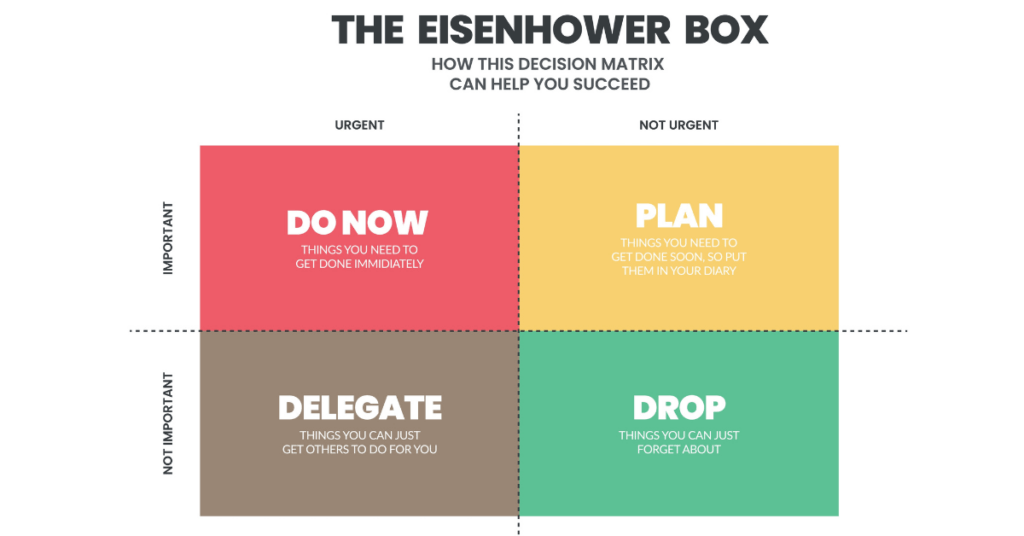Effective task management is crucial in today’s dynamic work environment. Traditional tools like the Eisenhower Matrix prioritize tasks by urgency and importance through a quadrant system. This article sets the stage for exploring modern alternatives that may better suit your productivity needs.
What are effective alternatives to the Eisenhower Matrix?
Effective alternatives to the Eisenhower Matrix include the Ivy Lee Method, Agile Methodology, and the Action Priority Matrix. These tools cater to varying needs for flexibility, simplicity, and impact-based task management, helping to prioritize tasks more adaptively and efficiently.
Top Alternatives to the Eisenhower Matrix
- Ivy Lee Method: Focuses on daily priority setting, ideal for maintaining consistent productivity with a simple to-do list approach.
- Agile Methodology: Adapts to changing priorities and tasks, perfect for teams needing flexibility and iterative progress in their projects.
- Action Priority Matrix: Assesses tasks based on impact versus effort, helping prioritize high-value, low-effort tasks.
- Kanban: Visualizes workflow stages, enhancing clarity and progression tracking for individual and team tasks.
- POSEC Method: Prioritizes by personal significance and efficiency, structuring tasks from personal organization to societal contribution.
Understanding the Eisenhower Matrix
The Eisenhower Matrix, a popular task management tool, breaks down tasks into a four-quadrant matrix based on urgency and importance. This simple yet effective framework helps you prioritize tasks that you should do immediately, schedule, delegate, or delete.

But, what if your to-do list reads like a bad soap opera script, filled with dramas and crises? That’s where alternatives come in handy, offering new strategies to manage the constant influx of demands. Each quadrant in the Eisenhower Matrix serves a distinct purpose: The “urgent and important” tasks demand immediate attention, often leading to a reactive mode of operation.
The “important but not urgent” tasks require scheduling time to focus on what really matters. Then, there are those “urgent but not important” tasks—perfect candidates for delegation. Lastly, the “neither urgent nor important” tasks should meet the business end of the delete button.
Prioritization in the Modern Workplace
In the modern workplace, the traditional Eisenhower Matrix might seem a bit rigid. Today’s dynamic environments demand flexibility and the ability to pivot quickly. This calls for a more fluid approach to prioritization, aligning with agile methodologies that emphasize adapting to changing priorities.
Let’s face it, the ability to rapidly switch gears can sometimes be the difference between thriving and barely surviving in today’s workplaces. Moreover, incorporating modern tools that can automate the mundane aspects of task management—like sorting emails into your inbox—frees up valuable time.
| Tool | Focus | Best For |
|---|---|---|
| Eisenhower Matrix | Urgency and Importance | Quick decision-making |
| Ivy Lee Method | Daily task completion | Personal productivity |
| Agile Methodology | Flexibility and Iteration | Project teams |
| Action Priority Matrix | Effort vs Impact | Resource optimization |
This allows you to concentrate on tasks that enhance productivity and drive forward long-term goals. The modern approach to prioritization also emphasizes workflow optimization, helping teams navigate complex project landscapes more efficiently.
The Ivy Lee Method for Daily Productivity
The Ivy Lee Method, stark in its simplicity, advocates for tackling the most important tasks each day. This method instructs you to list your six most important tasks each evening, prioritizing them for the next day. It’s akin to decluttering your mind and your desk, ensuring that you focus on what truly needs to be done without the paralysis often induced by an overwhelming task list.
This method’s beauty lies in its focus on single-tasking rather than multitasking. By promoting a concentrated effort on one task at a time, the Ivy Lee Method ensures that each task gets the attention it deserves. It’s a refreshing pivot from the matrix’s quadrant-based prioritization, offering a straightforward path to enhance daily productivity and manage your time effectively.
Agile Methodology in Task Management
Agile methodology, typically celebrated in software development, has found a pertinent place in personal productivity as well. Its iterative process, where tasks and projects are broken into manageable chunks, allows for regular reviews and adjustments. This adaptability makes it an excellent alternative for those who find the static nature of the Eisenhower Matrix too constraining.
Using agile, you can prioritize tasks based on their current relevance and deadline pressures, ensuring that you’re always working on what’s most crucial at the moment. This dynamic method helps manage time by focusing efforts on tasks with the highest priority and impact, rather than strictly adhering to a pre-defined urgency and importance matrix.
Integrating the Action Priority Matrix
The Action Priority Matrix is another effective tool for those looking to escape the rigid confines of the Eisenhower Matrix. This matrix categorizes tasks based on the effort they require versus the impact they have. It’s like deciding whether a task is worth the candle: high impact with low-effort tasks are the “quick wins” everybody loves.
Conversely, tasks that are high effort and low impact might be deemed “thankless tasks.” These are the chores you might consider dropping or delegating. By focusing on efficiency and impact, the Action Priority Matrix provides a practical framework for those looking to optimize their productivity and ensure their efforts yield the most substantial benefits.
Personal Thoughts
In exploring alternatives to the Eisenhower Matrix, I’ve sought methods that align with my analytical mindset while also catering to my need for stress management. This quest for efficiency has helped me handle my high-pressure roles and personal challenges more effectively.
Finding the right task prioritization tool has been pivotal in managing the demands of my professional and personal life. It’s not just about productivity; it’s about finding peace in the chaos and focusing on what truly matters.
Frequently Asked Questions
How does the Action Priority Matrix differ from the Eisenhower Matrix?
The Action Priority Matrix focuses on classifying tasks based on their impact and the effort required, unlike the Eisenhower Matrix which categorizes tasks by urgency and importance. This method helps prioritize tasks that provide the greatest benefits with the least effort, optimizing productivity and task management efficiency.
Can Kanban boards be used as an alternative to the Eisenhower Matrix?
Yes, Kanban boards are an excellent alternative to the Eisenhower Matrix, particularly for visual task management and workflow optimization. By using columns to represent different stages of the process, Kanban helps teams and individuals track task progress and manage workload effectively, focusing on moving tasks through stages from start to finish.
What role does prioritization play in effective project management?
Prioritization is crucial in project management as it helps teams and individuals identify the most important tasks that drive project progress. By focusing on these key tasks, project managers can better allocate resources, manage time, and meet deadlines, ensuring that critical project goals are achieved efficiently and effectively.
What is the least known alternative to the Eisenhower Matrix?
One lesser-known alternative to the Eisenhower Matrix is the POSEC method, which stands for Prioritize, Organize, Streamline, Economize, and Contribute. This approach helps individuals not only manage tasks but also broader life goals by organizing and streamlining activities according to their personal and professional significance.




